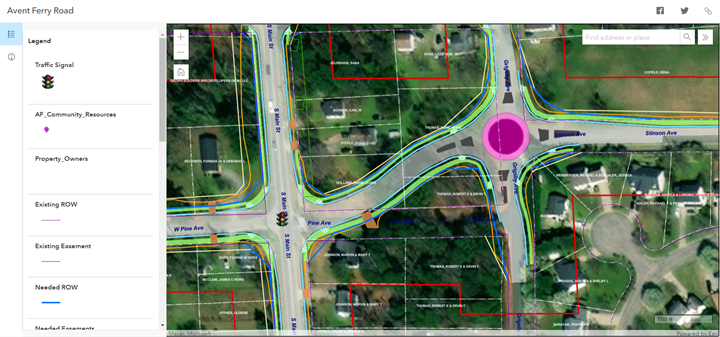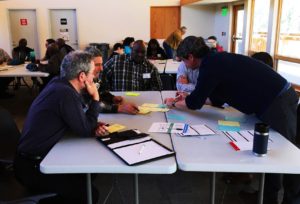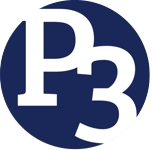
Data Collection
How do you know what the public wants if you don’t ask? Data collection is a fundamental part to answering relevant questions and building community-supported plans.
During each project, P3 ensures that the feedback provided by stakeholders is accurately and clearly conveyed to the project team for use in making plan recommendations, helping create accountability in decision-making.
When developing a survey for a project, P3 begins by considering some essential questions:
- What type of information would be most useful to the project team for creating alternatives or recommendations?
- What level of participation is expected from the public?
- How much influence can the public have in the decision-making process?
These questions help guide the survey development process so that the information being gathered is both useful to the project team and realistic in setting expectations for the public.

When possible, P3 uses interactive survey tools to help participants visualize project alternatives and provide informed and specific feedback.
When we say that equity is one of our core values, we mean it. We begin our projects by developing a public engagement plan that includes a detailed summary of the demographics in the project area. Collecting demographic data during project data collection efforts then allows us to track participation and pivot where necessary to ensure equitable outcomes.
Within a survey, P3 asks voluntary demographic questions to ascertain who has been reached. These questions are monitored throughout the public comment period to assess whose voices are missing from the conversation. Once identified, P3 enacts targeted outreach to the missing groups to try to gather more representative data.
By putting in place these measures, P3 aims to gather and report equitable, representative, and accurate community preferences to the project team to incorporate into plan recommendations.

While useful for gathering data, surveys are not the only effective way of obtaining the public’s feedback. Community conversations, public meetings, and workshops can often get a more in-depth perspective on the public’s concerns, ideas, and vision for their community. Additionally, smaller group meetings can often entice those who may be harder-to-reach by traditional means to participate in the project.
During meetings, P3 begins by providing participants with the information they need in order to understand the opportunities, challenges, and alternatives for the project. With this information, participants are then able to provide informed feedback based on their own experiences and preferences. P3 actively listens to participants, documents their feedback, and asks clarifying questions to ensure that the feedback gathered accurately reflects each participants’ input.
By providing meeting and comment summaries to the public, P3 helps participants see what feedback was gathered and how it was conveyed back to the project team and the agency.
The most important part of gathering community preferences is closing the feedback loop. After each public comment period and meeting, P3 compiles a meeting and comment summary that details the results of a survey and the input gathered during any public meetings. This report is not just for use by the project team in developing alternatives and recommendations, but also posted publicly to create transparency in the process.
Finally, during each project phase, P3 aims to relay what impacts past participation has had on the alternatives or recommendations being presented. By directly addressing how feedback is incorporated, P3 helps build trust between the residents who provided input, the project team, and the agency as a whole. This single act of transparency helps participants see that their input is not just valuable, but valued. Seeing how their ideas are valued will entice participants to continue participating in this project, as well as other future projects.

